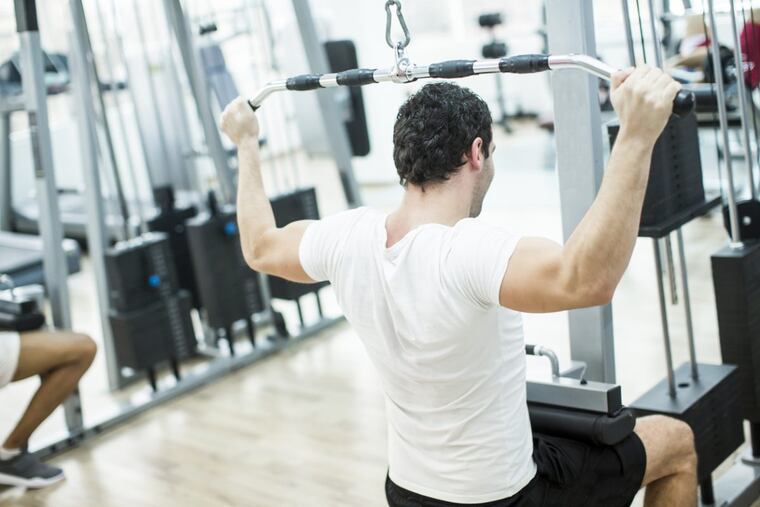Why you should re-think your machine-only workout
In most gyms, there's a machine for every muscle group. But if you plan to rely on machines only, you won't make much progress toward your fitness goals.

If your goal is to gain lean muscle mass, it may seem convenient and efficient to take advantage of the multitude of resistance machines sprawled across your gym. And for good reason: In most gyms, there's a machine for every muscle group and the usage instructions are posted in plain sight. But if you rely on machines only, you won't make much progress.
The choice between machines and free weights is a long-standing debate among fitness professionals. While it's certainly possible to build muscle with both forms of strength training, the American Council on Exercise recommends that workouts strategically pair free weights with machines for a safe and well-rounded approach. Knowing when to use which type of weight is the key to seeing results. That said, I believe the benefits from free weights far outweigh those of machines.
The problems with machines are many – from less efficiency to higher risk of injury. Here are a few of the pitfalls of a machine-only workout.
They work limited muscle groups: Machines isolate only one muscle group,which makes them ideal for targeting large muscles such as the chest or quadriceps. However, they don't require the use of stabilizing muscles. For example, working the biceps on a machine works only the biceps, whereas free weights require you to also engage the core. Ignoring the stabilizing muscles makes the body more susceptible to injury.
Free weights require your body to recruit more than just the targeted muscle to stabilize your movement. They strengthen more muscles and their surrounding connective tissues, such as tendons and ligaments, that attach to muscle fibers. Strong stabilizing muscles are crucial for preventing injury, maximizing calorie burn, and balancing muscle training.
They don't mimic real movements: The movements that machines encourage are often unnatural. In real life, the body doesn't move linearly, yet machines force the body to move on a single plane within a single range of motion. While this can sometimes help ensure proper form, it's too limiting to be of much use for functional strength training, which focuses on creating stronger muscles that can endure daily demands.
Free weights allow more natural movements — also known as functional movements — that better resemble the patterns of daily activity. Moreover, free weights require more mental focus on mechanics, therefore increasing coordination.
They aren't tailored to everyone: Even though machines allow the user to make adjustments, they can't feasibly accommodate all body types — and it can be close to impossible to find the perfect positions for your body. Most machines are made to accommodate an average build or body type. For example, those with long arms or legs or short torsos will struggle to use a machine comfortably. Forcing yourself to fit a machine that isn't right for you will increase your risk of injury, limit your range of motion, and decrease the overall effectiveness of your workout.
The bottom line: If you're new to strength training, machines can help you learn to engage each muscle group and acquaint you with muscle movements, but not in the absence of free weights. Regardless of your experience level, using free weights is a surefire way to either jump-start or increase your fitness. Knowing how to use them can lead to bigger gains. Always consult with a fitness professional if you are unsure of how to get started.
Brian Maher, CSCS, is the owner of Philly Personal Training, a Philadelphia-based studio offering personal training, physical therapy, and nutrition counseling.